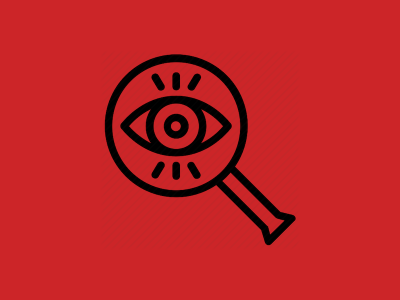COVID-19: A Pretext for Mass Surveillance?
Surveillance through CCTV, mobile apps, and the widespread implementation of facial recognition technologies have long been opposed by privacy advocates and citizens concerned about confidentiality. However, in recent weeks, the COVID-19 pandemic and the resulting panic have significantly changed the landscape. Let’s analyze how the infection and forced quarantine could trigger total surveillance of the population.
Introduction
As soon as the COVID-19 situation began to worsen, major corporations like Google and Apple saw the need for a system to track the spread of the new virus among citizens. All the necessary methods and technologies had already been developed and implemented; in a sense, tech giants and authorities just needed a solid reason for mass surveillance. And now, they have it. So, how exactly has the new coronavirus helped those eager to spy on us?
What Changed with the Arrival of COVID-19?
The key difference is that now, we ourselves are willing to accept such control. When faced with a choice between privacy and the risk of contracting a potentially deadly infection, most people are likely to sacrifice the former to prevent the latter.
Let’s set aside our own government and its methods for a moment (for example, the controversial features of the “Social Monitoring” app offered to COVID-19 patients in Moscow) and look at the example of the United Kingdom.
A recent study showed that British citizens are willing to accept government surveillance if it means these measures will be enough to prevent the spread of COVID-19.
For instance, The Telegraph published data indicating: “More than two-thirds of UK citizens would support mass surveillance using CCTV, mobile devices, and payment cards. Britons are willing to accept all this to prevent a second wave of COVID-19.”
Shortly after, another study revealed that 86% of the population “are willing to sacrifice their rights to stop the spread of the infection.”
In other words, the very concept of surveillance has been completely re-evaluated in Europe, where the losses from the pandemic are especially severe. For reference, Google joined the tracking program on April 3, promising to provide relevant data in 131 countries.
The American corporation claims it is necessary to create a clear picture of citizens’ movements in certain areas. The screenshot below shows an example of tracking data for UK citizens prepared by Google.
Figure 1. Tracking data for UK citizens as of March 29
The largest countries in Europe, and even Australia, are now using information collected by local telecom operators. One important difference between European countries and the US is how data collection is coordinated with users. In Europe, citizens’ consent is not required for data collection; that’s simply how cell towers operate there.
Or take Poland, where local authorities have forced citizens to use an app that combines selfies and location tracking to monitor compliance with self-isolation. Similarly, Ukrainians have recently been required to “report” their quarantine compliance using selfies.
Trends in Mass Surveillance in Russia
In addition to the previously mentioned “Social Monitoring” app, there is another notable sign of mass surveillance in Russia.
According to RBC, Moscow has purchased CCTV cameras worth 1.2 billion rubles, similar to those used in China. Such measures could lead to the identification of every citizen by face and complete control over people’s movements. Few people know that a person can also be identified by their gait or even their silhouette.
Another interesting piece of information was recently published by the BBC. The article examines the large-scale “Smart City” system that Moscow authorities have been developing for about ten years. Experts point out that, if necessary, the “Smart City” could easily be transformed into a “Big Brother” system.
As an example, the BBC cites the story of an employee of a federal TV channel. Upon returning from Italy, this person received an SMS from “DIT_MOS” (the Moscow Mayor’s Department of Information Technology).
The message made it clear that the authorities were aware of his arrival from a country with a dangerous epidemiological situation, and he was required to self-isolate for two weeks.
At the same time, the citizen received a similar email from the Moscow Department of Health.
All this shows that, if they wish, city authorities can easily monitor citizens’ movements. Nevertheless, the creators of the “Smart City” assure that their main concern is the convenience and safety of Russians, not control.
Conclusions
It’s hard to say where this whole pandemic story will lead. Since our technology-driven society is facing such a situation for the first time, the outcome is almost impossible to predict. Most likely, companies and governments interested in mass surveillance will try to use the situation to their advantage. All we can do is stay alert and make the right choices for ourselves when the time comes.



